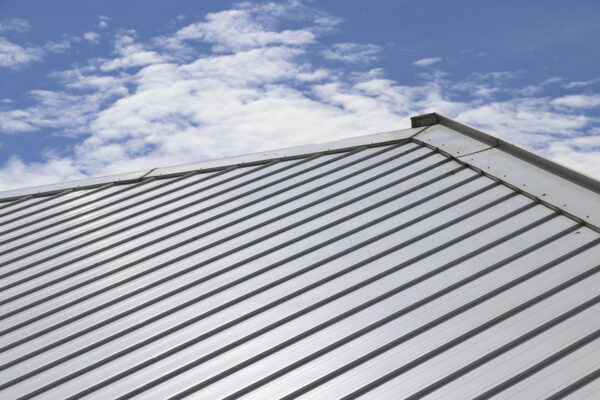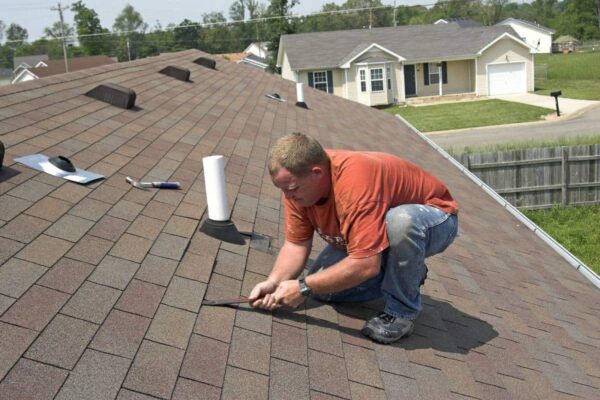Roofing nails and staples – they may seem like simple, insignificant items when it comes to constructing or repairing a roof. However, these seemingly minor components play a crucial role in the overall durability and reliability of your roof. Choosing between roofing nails and staples is no ordinary decision; it requires careful consideration of various factors to ensure that you make an informed choice.
In this article, we delve into the world of roofing fasteners, exploring their differences, benefits, drawbacks, and what you need to know to make the right decision for your roofing project.
Whether you’re a contractor or a homeowner planning to embark on a roofing endeavor, understanding the nuances between roofing nails vs. staples will prove invaluable in achieving a long-lasting and secure roof that withstands the test of time and elements alike. Stay tuned as we shed light on this essential aspect of construction that far too often gets overlooked!
What is the Difference Between Roofing Nails and Staples?
Roofing nails and staples are two commonly used fasteners when it comes to installing or repairing roofs. While they may appear similar, there are notable differences between these two options. Roofing nails are specifically designed for roofing applications and feature a larger head that helps prevent them from pulling through the materials. They also have ridges along the shank to provide added grip and resistance against wind uplift.
On the other hand, staples are often seen as a more economical choice due to their lower cost and faster installation process. However, staples do not have the same holding power as roofing nails, which can be a concern in areas with high winds or extreme weather conditions. Staples also tend to have smaller heads compared to roofing nails, making them more prone to tearing or damaging the underlying materials.
When considering which option is best for your roofing project, it is important to take into account factors such as climate conditions, roof material compatibility, building codes requirements, and personal preferences. Consulting with a professional roofer can help you assess these factors and make an informed decision that ensures long-lasting durability for your roof.
Benefits of using Roofing Nails for Your Project
Roofing nails offer several key benefits that make them a popular choice for roofing projects. One of the main advantages is their superior holding power. Roofing nails have a larger head and shank diameter compared to staples, which allows them to securely fasten the roofing materials in place even under high winds or other external pressures. This added stability ensures that your roof remains intact and protected during extreme weather conditions.
For maximum protection against rust and corrosion, roofing nails offer an unbeatable solution. These nails are typically made from galvanized steel or another rust-resistant material, which helps prevent deterioration over time. By using roofing nails, you can significantly extend the lifespan of your roof and reduce the need for frequent maintenance.
When it comes to the look of your roof, roofing nails offer a more attractive option compared to staples. The large heads of these nails create a neat finish on the surface of your roof without compromising its structural integrity.
Overall, choosing roofing nails for your project offers enhanced durability, longevity, and an aesthetically pleasing roof that not only functions well but also enhance the overall appearance of your home or building.
Advantages of Using Staples for a Project
When it comes to roofing projects, using staples can provide several advantages. One of the main advantages is that staples have a higher holding power compared to roofing nails. This means that once they are secured in place, they are less likely to come loose or pop out over time. This increased stability and reliability can help ensure the long-term durability of your roof.
Another advantage of using staples for a project is their ease of installation. Staples typically require less effort to drive into the roofing material compared to nails, which can be beneficial when working on larger and more extensive roofs. Additionally, staplers generally have a faster firing rate than nail guns, resulting in quicker installation times for contractors.
In addition, staples present less risk of damaging or splitting your roofing materials during installation when compared to nails. Their wider and flatter surface area distributes pressure more evenly across the material, reducing the risk of cracks forming or shingles getting damaged. Choosing staples for your project may offer improved strength and efficiency while minimizing potential harm to your roof’s integrity.
When Should you Use One Over the Other?
When deciding between roofing nails and staples, it is essential to consider the specific requirements of your roofing project. Roofing nails are typically recommended for projects where extra holding power is required. They have a larger head that helps secure shingles or other materials in place more effectively, preventing them from lifting or becoming loose over time. The longer length of roofing nails allows for better penetration into the roof sheathing, providing increased stability.
On the other hand, staples may be a suitable choice for less demanding applications or temporary repairs. They are quicker and easier to install compared to nails since they can be shot rapidly with a staple gun. Staples also tend to cost less than roofing nails, making them a more cost-effective option when budget is a concern.
Ultimately, the decision between using roofing nails or staples will depend on factors such as the type of material being installed or repaired, climate conditions that may impact durability requirements (such as high winds), personal preference based on experience and familiarity with either fastener type. Consulting with professionals in the field can provide valuable guidance on which option would best suit your particular roofing needs.
Which is the Best Choice, Roofing Nails or Staples?
When it comes to choosing between roofing nails and staples for your roof construction or repair project, careful consideration is essential. Both options have their own set of benefits and drawbacks. Roofing nails are known for their superior holding power and resistance to wind uplift, making them a popular choice for areas with high winds or frequent storms. On the other hand, staples are often more cost-effective and quicker to install, which may be advantageous for larger projects or tight budgets.
The decision between roofing nails and staples should be based on factors such as the climate in your area, the specific requirements of your project, and personal preferences. It’s recommended to consult with a professional roofer who can assess these factors and provide expert guidance on what option would work best for your particular needs.
Regardless of whether you choose roofing nails or staples as your fastener of choice, ensuring proper installation techniques and following industry standards will contribute greatly to the longevity and reliability of your roof. Taking the time to make an informed decision about this seemingly minor component can go a long way in ensuring that you have a durable roof that will withstand various weather conditions for years to come.











